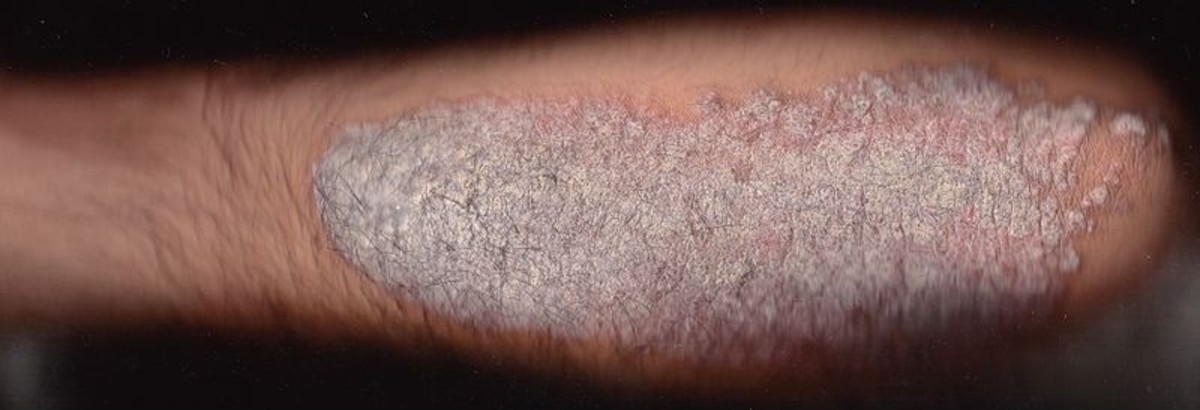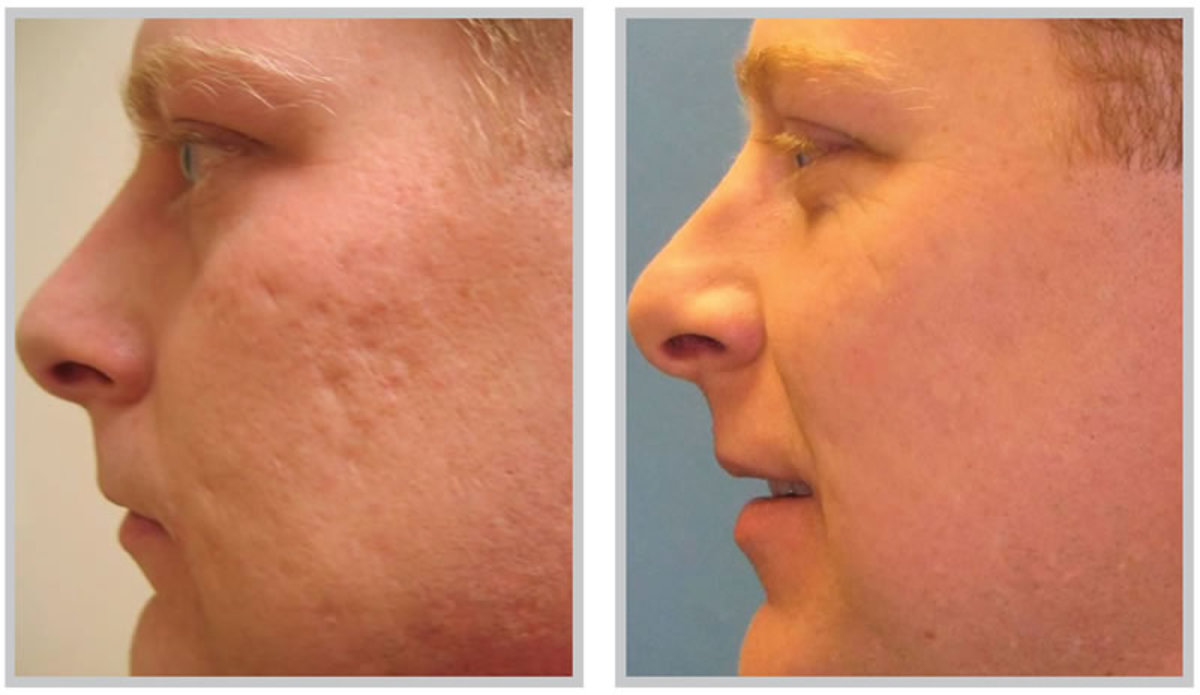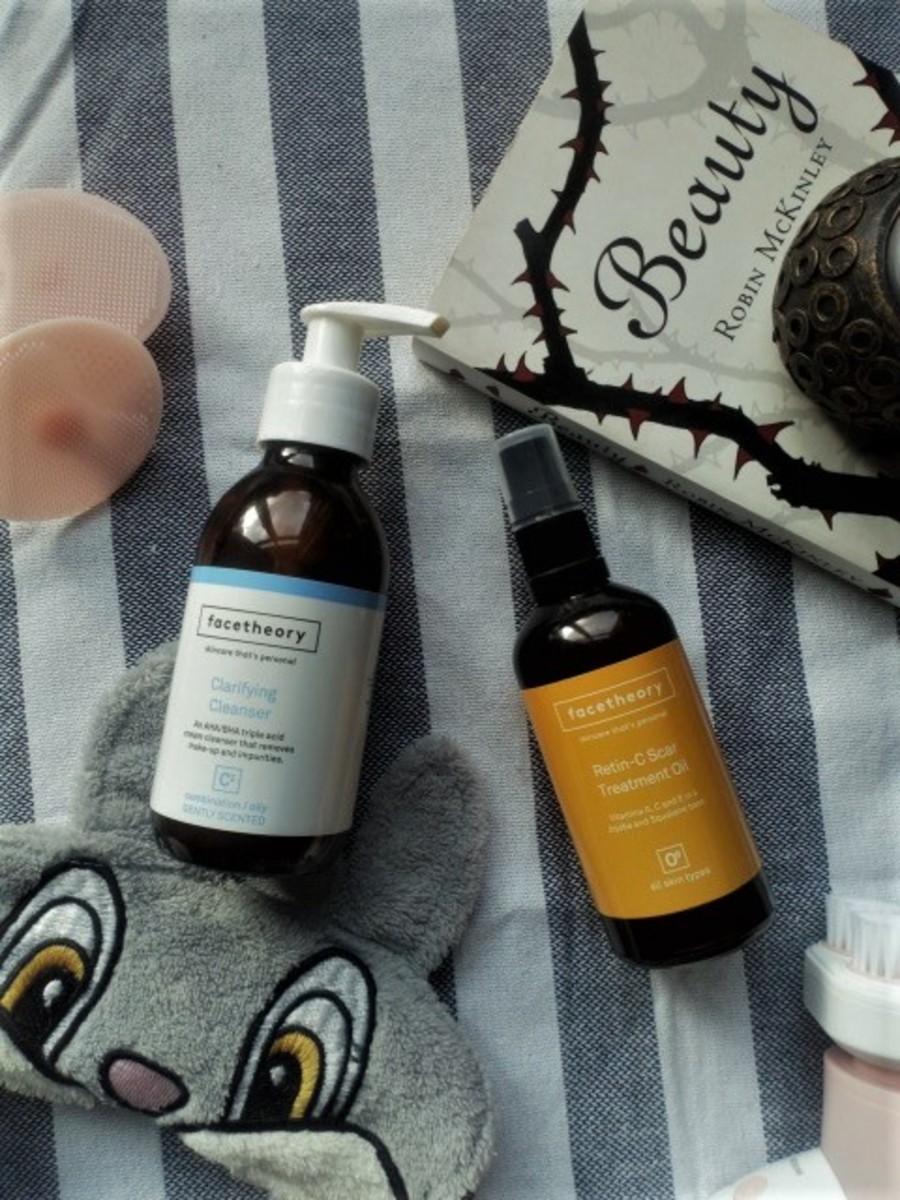- HubPages»
- Fashion and Beauty»
- Skin Care»
- Facial Skin Care»
- Acne, Pimples & Blackheads
Adult Acne Causes and Cures
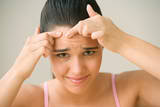
Best Acne Solutions & Remedies
What would it do for your outlook and self confidence to be able to control, contain, eliminate and/or prevent break-outs?
It makes such a huge difference when you know your skin looks good and you are not constantly trying to cover up your face with tons of make-up, or having to get through the day with tons of red, inflamed pimples on your face.
Once you discover a way to get rid of your acne, your self-esteem can skyrocket and you will not only look your best, but BE your best, too.
You will no longer be embarrassed or self-conscious of your skin, and the mission here is to help you find effective ways to get there.
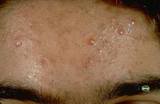
Causes of Acne
To put it simply, the cause of acne is nothing more than hair follicles on your skin (pores) being blocked with an overproduction of a substance called sebum, or oil.
Glands are located deep in the skin, which are connected to a hair follicle. The oil (sebum) is produced by the glands for the purpose of keeping the hair follicles and skin surface lubricated. The hair follicle is exposed to the surface of your skin through your pores. Oil glands can be overstimulated to produce excess oil due to any kind of hormonal change from stress, pregnancy, menopause or puberty.
When the pores of your skin become blocked and the oil (sebum) cannot reach the surface of the skin, the oil becomes trapped in the skin pores, resulting in acne, usually a whitehead or blackhead. The pores become blocked by skin cells that get stuck together with the oil.
To make it worse, there is bacteria which is always present in your skin to help keep more harmful bacteria from invading your skin. When the bacteria gets trapped in the pores with the skin cells and oil, the level of bacteria grows, leading to inflammation and acne. Inflammation in the skin is your body's way of trying to rid itself of something it sees as being foreign to your system.
Other causes of acne include some drugs (barbiturates, steroids), excessive rubbing of the skin and greasy creams or make up.

Types of Acne
When bacteria is running wild in the pores which are blocked with sticky cells and oil, the oil is trapped and cannot get through to the skin surface, resulting in bulges forming under the skin surface. These bulges push, but are never able to break out through the skin pore.
You will then have, in order of severity:
Blackheads
Form when pores are blocked close to the skin surface. Usually not inflamed, they look dark not because of dirt trapped under the skin, but because of dark pigmentation.
Whiteheads
Form when sebum is trapped more deeply within a pore. The light-colored bumps under the skin can grow in size as more oil builds up under the skin. Whiteheads can later turn into a pimple, and can become inflamed.
Pimples
Also called pustules. Full-blown pimples occur when the sebum, skin cells and bacteria get inside the skin and cause irritation. The wall of the blocked follicle ruptures and plenty of irritation will follow.
Cysts
Can look like a pimple but are really a more serious infection. Found deep in the skin, cysts are larger and considerably more inflamed than a pustule.
Four Things you MUST Do
If you don't do the following four things, you can forget about clearing up your acne.
You need to resolve these issues -
- Kill bacteria
- Reduce oil
- Unplug pores
- Reduce inflammation
A good acne treatment will take care of more than one of the above issues at the same time, which makes the process faster and easier.
Acne Treatments
Now that you know the causes of acne, types of acne and what 4 things you must do for treatment, which option are you going to choose?
Depending on the severity of your acne, frequency and duration of outbreaks, and with the ultimate goal in mind of getting rid of this embarrassing and possibly disfigurating skin issue, you now have done your research and can pick treatment options that will give you the best and most effective results.
Remember that this can be a mix and match program custom fit for you, because everybody's skill is different. Someone who suffers from extremely oily skin may go for a different treatment option than someone who suffers from dry, inflammed patches of skin.
Whatever you decide, it's important to begin some kind of treatment so your skin doesn't get worse, or permanent damage and/or scarring may result. Not only that, but why put off the opportunity to have the flawless, clear skin you've always wanted?
With any treatment program, results vary, but you should see noticeable results within 4-12 weeks. If this sounds like a long time, just remember everything that needs to happen for the skin to be able to correct and heal itself.
Just stick with your plan and know that everyday is one day closer to achieving your ultimate goal of flawless skin.
Treatment Options
There are several things you can use to treat your acne, and the earlier you begin, the better your success rate.
As long as your treatment addresses all of the issues that need to be resolved (reduction of bacteria/oil, inflammation and unclogging pores), then you will be on the right track to getting the situation under control.
Depending on the severity of your acne, treatment options include -
- Prescriptions / Pills (moderate to very severe)
- Hormonal Treatments (moderate to severe)
- Light Therapy (mild to severe)
- Dietary Supplements/ Changes to Diet (mild to moderate)
- Topical Creams/Cleansers/Moisturizers (mild to moderate)
Effectively treating your acne helps to prevent or reduce permanent damage (scarring) to the skin, take away pain and irritation, prevent future breakouts and possibly the most important reason, to eliminate the self-consciousness and embarrassment of acne.
There is a misconception out there that people who have acne are somehow unclean or have poor hygience habits, but seriously, nothing could be further from the truth. It is not a hygiene issue, and hopefully, the idea that poor hygiene is the culprit can be chalked up to being nothing more than a myth.
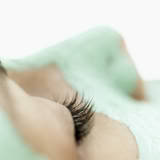
Skincare Regime
The best place to start your treatment plan is with a good skincare regime, to help keep your skin very clean. Cleansing the skin will get rid of those dead skin cells, excess oil and keep the pores clear. Cleansing should be considered the foundation on which to build your treatment plan.
Cleaning the skin should not be mistaken for stripping the skin with harsh chemicals. Gentle yet effective cleaning is the happy medium you are striving for.
Medicated cleansers may contain benzoyl peroxide or retinoids, which are a Vitamin A-based product. Some cleansing products may contain an amount of salicylic acid, which helps to get rid of those dead skin cells thus improving the odds of clearing out clogged pores and glands.
When using a new product or something your skin is not used to, you may experience some redness, dryness or a slight burning sensation. Discontinue use of overly harsh products if the irritation does not go away after a few days or worsens.
If you have a mild acne condition, you should see improvement in the skin with 4-12 weeks.

Tips to Keep Skin Looking Great
- Never scrub your skin while cleansing as the skin will become irritated; gently wash and pat dry
- Never squeeze or pop your pimples because you will get permanent scars
- Substitute natural cleansers for those containing benzoyl perioxide - try products made with green tea, tea tree oil or calendula
- Drink more water to keep skin hydrated and to flush toxins
- Increase antioxidants in your diet (green tea, fruits & vegies - even dark chocolate!)
- Increase amount of omega-3 fatty acids (fish)
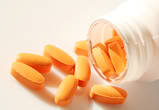
Prescriptions / Pills
Upon the initial consultation with a dermatologist, he/she will perform an analysis based on the number of pimples on your face. On a scale from 1 to 4 (with 4 being most severe), your specific treatment plan can be diagnosed.
Medications prescribed may include -
Antibiotics (such as Tetracycline, Minocycline, Doxycycline, Erthromycin)
Oral antibiotics are effective because the reduce the level of bacteria that cause inflammation
Hormonal (such as low-dose birth control pills)
Birth control pills lower hormonal activity, which reduces the over-production of sebum in the glands/blocking of hair follicles
Accutane
There are those who believe that Accutane is the closest thing to a cure for acne, however, it is usually only prescribed for extremely severe cases of acne in which no other form of treatment was effective. Accutane comes with its share of risks, so you want to be sure to go over a very thorough list of side effects and long-term effects of this medication. Treatment time for Accutane may last for up to 6 months.
It is important to understand any and all side effects if choosing to go with a prescription treatment option, and your doctor can supply you with all of those details.
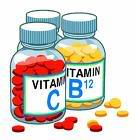
Dietary Supplements
Good vitamins for the health and healing of skin include -
Vitamin A
One of the most popular supplements for treatment of acne. Vitamin A, when applied directly to the skin, helps increase cell turnover, which will help keep your pores clear. Add foods rich in Vitamin A to your diet (fish oils) and your skin will thank you.
B Vitamins
Taking a B-complex supplement is good for your skin.
Vitamin B2 helps to relieve stress, which is good whether or not you have acne. Eat more green leafy vegies, fish and whole grains to increase your vitamin intake.
Vitamin B3 helps with circulation, which is important when you want healthy-looking skin and to assist in flushing toxins away. Improved circulation gets more nutrients to your skin. Foods rich in Vitamin B3 are eggs, peanuts and avocados.
Vitamin C
Vitamin C is another vitamin with those all important antioxidant properties. Vitamin C is not only known for its immunity boosting abilities (warding off a cold), but it is essential for repairing cell damage and fighting off infections. Vitamin C has also been known to act as a bacteria fighter, which is a major factor in getting rid of the excess bacteria that is found in acne. Eat citrus fruits to pump up your intake of Vitamin C.
Vitamin E
For great skin, you need to take a supplement containing antioxidant properties, which fight the damage caused by free radicals. Free radical damage is caused by cells in your body attacking healthy cells in order to steal molecules. Once the damaged cells start stealing molecules from healthy cells, you have what is knows as "free radical damage."
Vitamin E can help slow down free radical damage, in addition to healing and repairing tissue.
Vitamin E rich foods include nuts (almonds, sunflower seeds, peanuts) and broccoli.

Acne + Diet
How important is your diet as it relates to acne?
To clear up a rumor, there is no proof that foods such as chocolate, soda, pizza, and greasy french fries have any effect on the skin, cause or worsen the condition of acne. Another myth busted!
There have been studies which do show a link between the consumption of dairy products - regular and skim milk in particular - and the increase of acne outbreaks. The study shows that teenagers who consumed 3+ servings of dairy products per day (milk) were 22% more likely to suffer from severe acne. Those who indulged in 2+ servings of skim milk were 44% more likely to have been diagnosed with severe teenage acne. Interestingly enough, those who consumed whole or low-fat milk did not appear to be as prone to experiencing severe acne.
Other dairy foods that were shown to have a minor effect on acne outbreaks are cottage cheese, sherbet and cream cheese.
The reason dairy products may have such an adverse effect on your system and worsen acne is due to the milk protein casein. Casein tends to thicken mucus and irritate the immune system. Maybe that is why your mother told you not to drink milk when you had a cold due to the fact that it thickened mucus, thus making it harder to breathe. Mom was one smart cookie!!
Oddly, skim milk appears to be the #1 dairy product to eliminate from your diet in your war against acne.
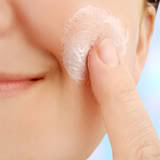
Topical Creams - Best skin creams for acne
Topical skin creams are generally medicated and applied directly to the skin after cleansing. Much like cleansers, these creams may contain benzoyl peroxide, antibiotics, retinoids or alpha-hydroxy acids.
Benzoyl peroxide is used to dry up excess oil in the skin by destroying bacteria
Acids assist in eliminating dead skin cells to keep the pores of the skin clear
Sulfar-based creams actually break up pimples on the skin
Again, if you find that the cream you are using is too harsh for your skin, discontinue using it. It is normal to experience some slight redness and/or burning, but if it gets worse or becomes painful, it's time to stop using it.
Light or Laser Therapy
One of the newer treatments for acne is light or laser therapy, of which there are different methods based on the severity of your condition. Note that light/laser therapy is not one of the common treatments, however, has been gaining popularity. This option is generally used when the more traditional treatments don't seem to be working, or when trying to control chronic breakouts
Goals of this type of therapy are to target deep layers of skin without causing damage to the surface of the skin, to focus on the sebaceous glands and prevent them from over-producing sebum (oil), and/or to eliminate the bacteria that generates inflammation.
Here are the different types of light / laser treatment options -
Blue Light Therapy
Skin is exposed to a blue light targeting bacteria
A series of treatments must be performed on a regular basis for a specific period time to control the ever-present bacteria which produces quickly
Treated areas may experience redness or dryness
Blue & Red Light Therapy
Combination of treating skin with blue and red light...an updated version of blue light only therapy and reported to be a bit more effective
Pulsed Light & Heat Energy Therapy
Combination of pulsed light and heat energy meant to target bacteria and to diminish the size of sebaceous glands, in order to minimize the production of sebum
Treated areas may experience temporary redness
Diode Laser Therapy
Destroys sebaceous glands in the deeper layers of the skin without harming surface skin
Treated areas may experience redness and swelling and since any type of laser therapy may be painful, an analgesic may be applied to the skin prior to treatment
Photodynamic Therapy
Combination of light therapy and topical medications known as "photosensitizing agents" which are applied to the skin prior to treatment to increase the effects of the light therapy
Light therapy may be a series of blue, red or pulsed light, plus another type of light therapy
Treated areas may experience redness, swelling, crusting over of the skin or acne flare-ups
Photopneumatic Therapy
Vacuum suction used to remove dead skin cells + sebum from the glands
Followed up with blue & red light therapy meant to destroy bacteria and reduce inflammation
The good news about these therapy options is that they have shown to improve the texture of the skin, and diminish the appearance of scars, so it may be a great option for someone interested in treating acne, in addition to scarring.
Another bonus is that light therapy has also been used to reduce fine lines and wrinkles. So you can get rid of the zits and crow's feet at the same time!
The jury is still out on the long-term effectiveness of these light / laser therapies. These treatment options can be more on the expensive side. If using this type of therapy at home, extreme caution should be used so as not to cause further damage to the skin. Be sure to read all directions and follow them to the letter.
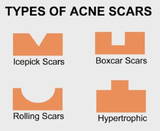
Removing Acne Scars
Usually, if you have mild acne, with standard treatment such as cleansing and using a good cream, the problem can be resolved and you may not experience any scarring at all.
If, however, your acne is moderate to severe, you may be left with scars. One of two types of scars may result -
- Hard, raised areas on the surface of the skin known as "hypertrophic scars"
- Indentations left behind at various depths into the skin surface known as "pock marks" or "pits"
Treatment Options for Acne Scars
Topical creams
- Applied directly to skin to diminish appearance of minor scars
Dermabrasion
- Uses a high-speed rotating brush to eliminate top layer of skin revealing smoother skin underneath
- May improve the appearance of scars, but depending on the type of scar, may not remove them
- Several treatments required
Microdermabrasion
- Aluminum oxide crystals are passed through a vacuum-like tube removing surface skin
- Results vary
- Repeated treatments required and skin may be irritated for up to several days after treatment
Collagen injections
- Inject collagen directly into affected areas on skin
- Results are immediate but do not last - repeated treatments are required usually every 3-6 months
Fat from another location on your own body may also be used instead of collagen, and injected directly into the scar. Just like collagen injections, the results are immediate but not permanent. Follow up treatment needs to be repeated every 6-18 months because your body will re-absorb the fat.
Laser Therapy
- Laser applied directly to affected areas to promote growth of natural collagen in skin underneath scar to plump up depressions without injuring surface of skin
- A single treatment may be effective, but skin will remain red for months after procedure
Acne Solutions
- Skin Care - Women's Health Issues
Whether your acne is moderate or severe, good skin care is key!

